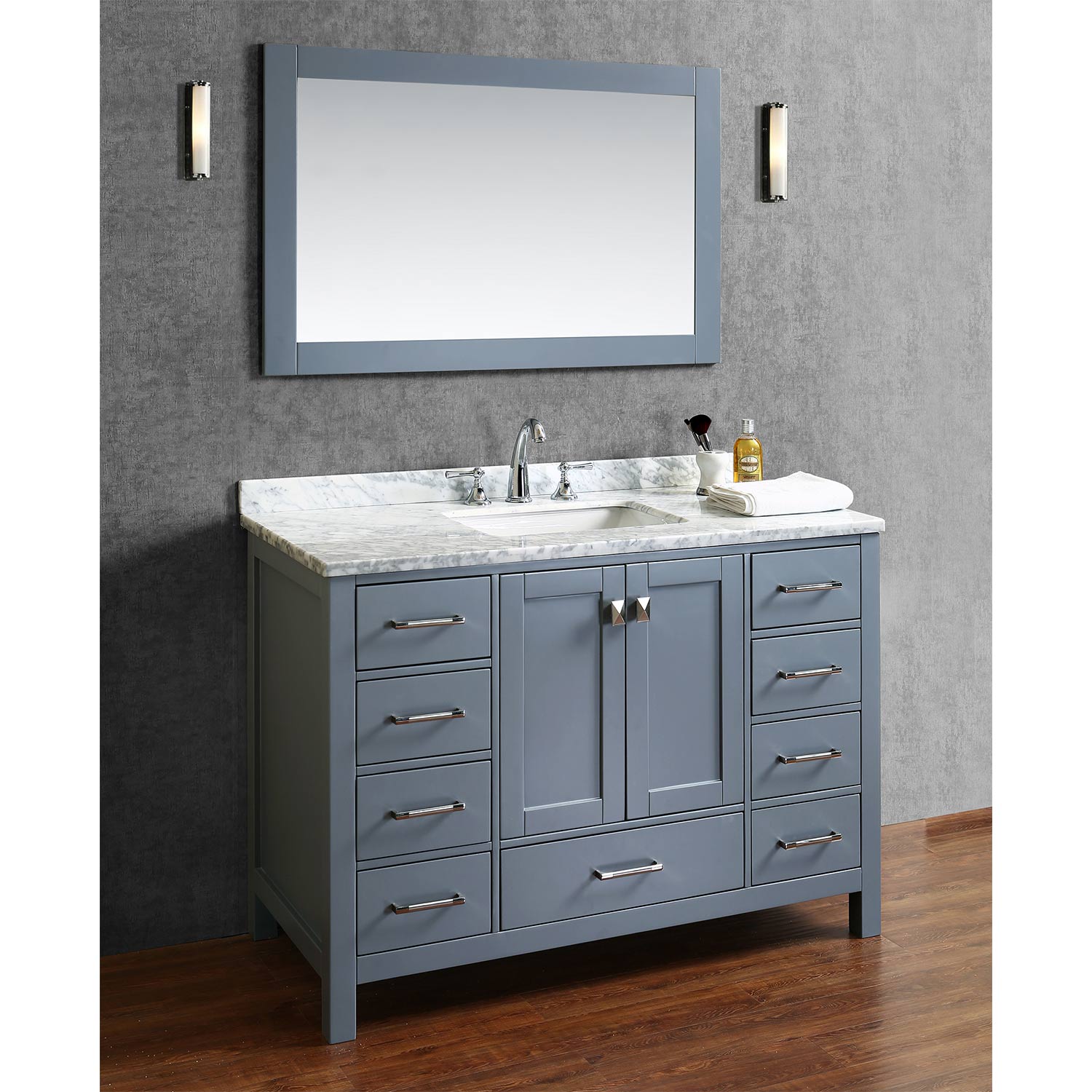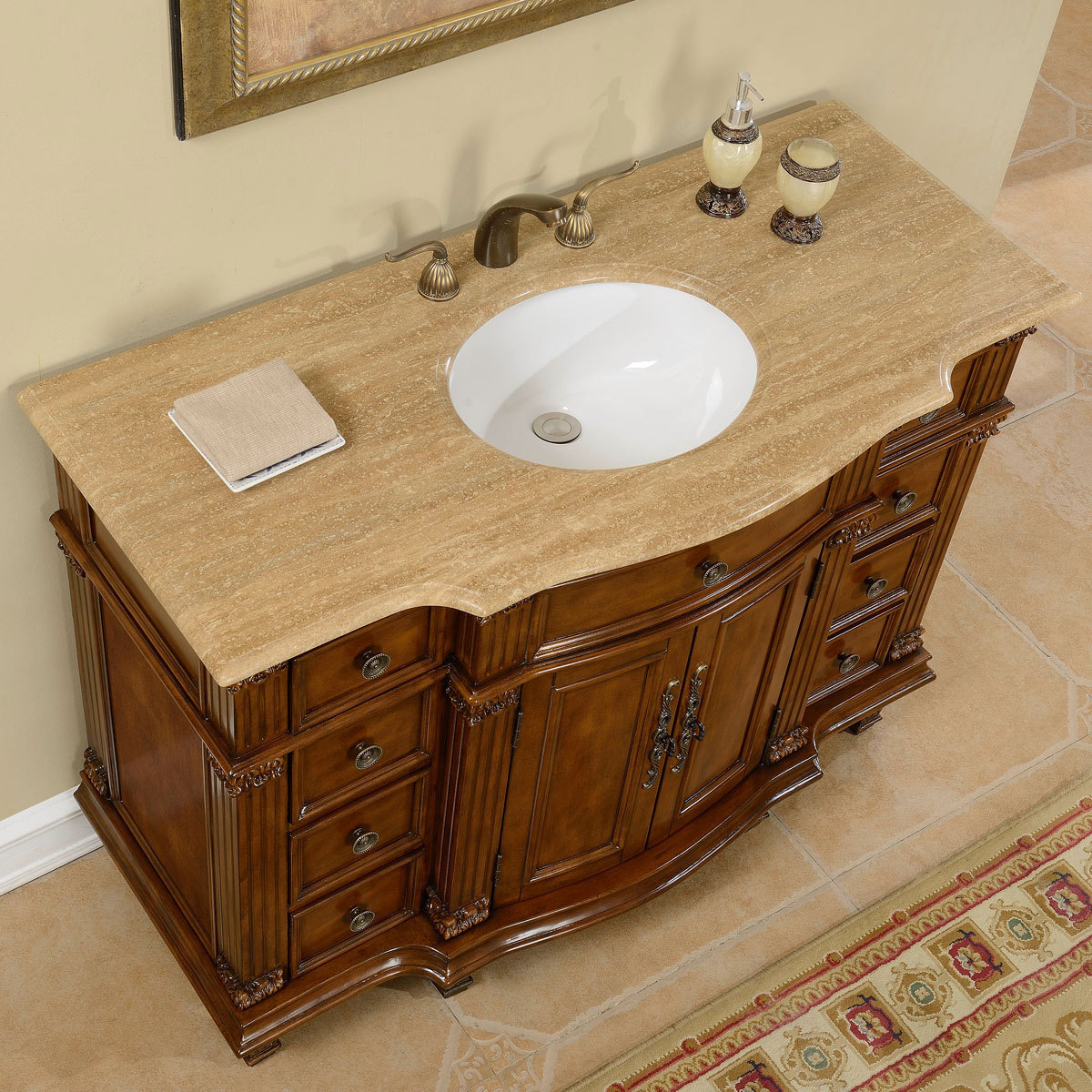Choosing the Right Vanity

You’ve chosen an unfinished bathroom vanity, which gives you the freedom to personalize it with your own style and preferences. But with so many options, choosing the right vanity can feel overwhelming. This guide will help you navigate the process and make informed decisions based on your needs and budget.
Vanity Materials
The material of your vanity significantly impacts its durability, water resistance, and overall aesthetics. Here’s a comparison of popular choices:
- Wood: A classic and elegant option, wood offers natural beauty and durability. Hardwood, like oak, maple, and cherry, is highly resistant to scratches and moisture. Softwood, like pine and cedar, is less durable but more affordable.
- MDF (Medium-Density Fiberboard): A cost-effective alternative to wood, MDF is engineered from wood fibers and resin. It’s smooth, consistent, and readily available. However, it’s less water-resistant than wood and prone to damage if exposed to prolonged moisture.
- Plywood: Made of thin wood veneers glued together, plywood offers stability and strength. It’s a good choice for moisture-prone areas, as it’s more resistant to warping than MDF.
Finishes
The finish you choose will protect your vanity from moisture, enhance its appearance, and determine its overall style.
- Paint: Provides a smooth, even finish and offers a wide range of colors. It’s easy to apply and maintain. However, paint can chip or scratch over time, especially in high-traffic areas.
- Stain: Allows the natural wood grain to show through, creating a warm and rustic look. It’s durable and water-resistant, but requires regular maintenance to prevent fading.
- Varnish: A clear protective coating that enhances the natural beauty of wood. It’s highly water-resistant and durable, but can yellow over time.
Storage Options
Choosing the right storage options is crucial for maximizing space and keeping your bathroom organized.
- Drawers: Provide easy access to toiletries and other bathroom essentials. Consider the number and size of drawers based on your storage needs.
- Cabinets: Offer ample storage for towels, linens, and larger items. Choose cabinets with adjustable shelves for versatility.
- Open Shelving: Adds visual appeal and allows for easy access to frequently used items. Consider using baskets or containers to keep items organized.
Sink Placement
The placement of the sink is essential for both functionality and aesthetics.
- Center-set Sink: A traditional option, the sink is positioned in the center of the vanity top. This creates a balanced look and provides ample counter space.
- Off-set Sink: The sink is positioned to one side of the vanity top, maximizing counter space on the other side. This is ideal for smaller bathrooms.
- Vessel Sink: A decorative sink that sits on top of the vanity top. This creates a unique and modern look, but may limit counter space.
Maximizing Space in a 48-Inch Vanity
A 48-inch vanity offers a good balance of storage and counter space. Here’s a layout that maximizes functionality:
- Center-set Sink: Position the sink in the center of the vanity to provide equal counter space on both sides.
- Double Drawers: Include two large drawers on each side of the sink for ample storage.
- Open Shelf: Add a small open shelf above the drawers on one side of the sink for easy access to frequently used items.
Installing the Vanity

Now that you’ve chosen the perfect unfinished vanity for your bathroom, it’s time to get it installed. This process might seem daunting, but with the right tools and a bit of patience, you can easily install your vanity and enjoy its beauty for years to come.
Preparing for Installation, 48 inch unfinished bathroom vanity without top
Before you begin, gather the necessary tools and materials:
- Level
- Tape measure
- Pencil
- Drill with appropriate bits
- Screwdriver
- Stud finder
- Safety glasses
- Work gloves
- Caulk gun
- Caulk
- Silicone sealant
- Plumb bob
- Construction adhesive
- Shims
- Screws (for securing the vanity to the wall)
- Optional: A helper for lifting and positioning the vanity
Positioning and Leveling the Vanity
- Determine the location for your vanity, ensuring it’s positioned away from any obstructions and allows for adequate clearance around the sink.
- Use a stud finder to locate the wall studs. This is crucial for ensuring the vanity is securely attached.
- Mark the wall where the vanity will be placed, taking into account any necessary adjustments for plumbing connections.
- Position the vanity against the wall and use a level to ensure it’s perfectly horizontal.
- If needed, use shims to adjust the vanity’s height and level it properly.
Securing the Vanity to the Wall
- Once the vanity is level, use a pencil to mark the location of the mounting holes on the wall.
- Drill pilot holes at the marked locations, using a drill bit slightly smaller than the screws you’ll be using.
- Secure the vanity to the wall studs using the appropriate screws.
- If the vanity doesn’t have pre-drilled holes, you can drill them yourself, ensuring they’re aligned with the wall studs for maximum stability.
Installing the Countertop and Sink
- If you’re using a pre-fabricated countertop, it’s usually a simple matter of placing it on top of the vanity and securing it with clips or brackets. Follow the manufacturer’s instructions for your specific countertop.
- If you’re cutting your own countertop, you’ll need to carefully measure and cut the countertop to fit the vanity.
- Use a template to ensure the sink cutout is accurately placed on the countertop.
- Cut the sink opening using a jigsaw or a special countertop cutting tool.
- Place the sink in the cutout and secure it using silicone sealant.
- Use construction adhesive to bond the countertop to the vanity, ensuring it’s flush and secure.
Connecting Plumbing Fixtures
- Before connecting the plumbing fixtures, turn off the water supply to the bathroom.
- Attach the drain pipe to the sink and connect it to the drain line.
- Connect the water supply lines to the faucet, ensuring they’re securely fastened.
- Turn on the water supply and check for any leaks.
- Use Teflon tape on the threads of the supply lines to prevent leaks.
Final Touches
- Caulk around the edges of the countertop and sink to create a watertight seal.
- Clean up any excess caulk or sealant.
- Once the caulk has dried, install the vanity hardware and enjoy your new bathroom vanity.
Finishing the Vanity: 48 Inch Unfinished Bathroom Vanity Without Top

Now that you have your unfinished vanity ready, it’s time to give it the final touch! This step involves sanding, priming, and painting or staining the vanity to achieve your desired look. This section will guide you through the process, ensuring you have a beautiful and durable vanity that complements your bathroom design.
Essential Tools and Materials
Before you begin, it’s important to gather the necessary tools and materials. Having everything readily available will ensure a smooth and efficient finishing process.
- Sandpaper: You’ll need a variety of grits, starting with coarse (80-100 grit) for initial smoothing and finishing with fine (220-400 grit) for a smooth, polished surface.
- Random orbital sander: This tool will speed up the sanding process and provide a more consistent finish.
- Primer: Choose a primer specifically designed for wood and compatible with your chosen paint or stain.
- Paint or stain: Select a high-quality, water-based paint or stain that is moisture-resistant and durable.
- Paintbrushes or rollers: Choose the appropriate size and type for your project.
- Paint thinner or mineral spirits: For cleaning brushes and tools.
- Drop cloths: Protect your workspace from spills and drips.
- Safety glasses and respirator: To protect your eyes and respiratory system from dust and fumes.
- Gloves: To protect your hands from paint, stain, and chemicals.
Sanding the Vanity
Sanding is crucial for preparing the vanity for priming and painting or staining. It creates a smooth surface, removes imperfections, and allows for better adhesion of the finish.
- Start with coarse sandpaper: Use 80-100 grit sandpaper to remove any rough spots, scratches, or imperfections.
- Progress to finer grits: Gradually transition to finer grits, such as 120, 180, and 220, to smooth the surface further.
- Sand with the grain: Always sand in the direction of the wood grain to avoid creating scratches or swirl marks.
- Clean the surface: After sanding, use a tack cloth to remove any dust or debris from the vanity.
Priming the Vanity
Priming serves as a barrier between the wood and the paint or stain. It helps to create a smooth, even surface, improves adhesion, and prevents the wood from absorbing too much paint or stain.
- Choose the right primer: Select a primer specifically designed for wood and compatible with your chosen paint or stain.
- Apply a thin, even coat: Use a brush or roller to apply a thin, even coat of primer to the entire vanity.
- Allow the primer to dry completely: Follow the manufacturer’s instructions for drying time.
- Sand lightly if necessary: If the primer is uneven or has any imperfections, sand it lightly with fine-grit sandpaper before applying the paint or stain.
Painting or Staining the Vanity
Once the primer is dry, you can apply your chosen paint or stain.
- Painting: For a painted finish, use a high-quality, water-based paint that is moisture-resistant and durable. Apply two or three thin coats, allowing each coat to dry completely before applying the next.
- Staining: For a stained finish, use a high-quality, oil-based stain. Apply a thin, even coat with a brush or cloth, following the manufacturer’s instructions.
Protecting the Vanity from Moisture
To ensure your vanity lasts for years to come, it’s essential to protect it from moisture.
- Apply a sealant: After the paint or stain has dried, apply a sealant specifically designed for bathrooms. This will create a protective barrier against moisture and spills.
- Regular cleaning: Clean your vanity regularly with a mild soap and water solution to prevent dirt and grime buildup.
- Avoid harsh chemicals: Avoid using harsh chemicals or abrasive cleaners on your vanity, as these can damage the finish.
Proper Ventilation and Safety Precautions
During the finishing process, it’s crucial to ensure proper ventilation and take necessary safety precautions.
- Work in a well-ventilated area: Open windows and doors to allow fresh air to circulate, especially when using paints, stains, or primers that emit fumes.
- Wear safety glasses and a respirator: Protect your eyes and respiratory system from dust, fumes, and chemicals.
- Use gloves: Protect your hands from paint, stain, and chemicals.
- Keep materials away from children and pets: Store paints, stains, and other materials in a safe place out of reach of children and pets.
48 inch unfinished bathroom vanity without top – A 48-inch unfinished bathroom vanity without a top gives you the freedom to design a bathroom that’s totally you. You can choose a unique countertop material, like marble or quartz, and pair it with a statement faucet like the kohler ombre bathroom faucet to add a touch of modern elegance.
Then, you can finish it off with your own personal style, like sleek hardware and cool lighting, to make your bathroom a total showstopper.
A 48 inch unfinished bathroom vanity without top gives you the freedom to customize your bathroom design. You can choose the perfect countertop and sink to match your style, and you’ll have plenty of space for storage. When deciding on the faucet, you might be wondering if you want a 2 handle or 1 handle faucet.
Check out this article on bathroom faucet 2 handle vs 1 handle to get some ideas. With the right faucet, your 48 inch unfinished bathroom vanity without top will be the perfect focal point of your bathroom.